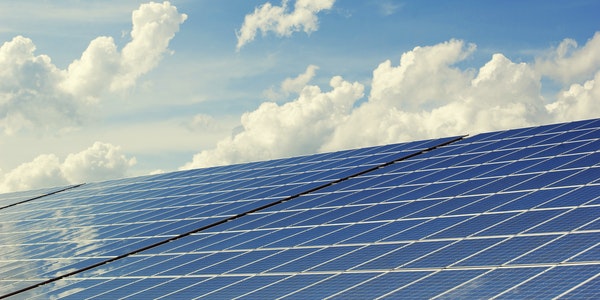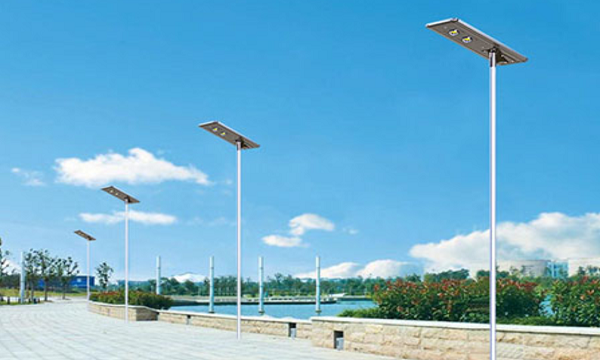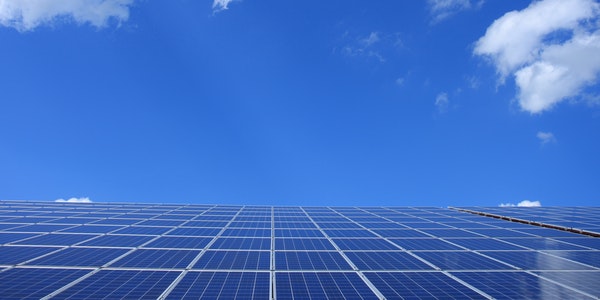Solar cell
1 Definition and classification
Solar cells were first developed by the Bell Institute of the United States in 1953. In 1958, pioneer-1 satellite used solar cells as a power source for the satellite for the first time. Since the emergence of the energy crisis in the 1970s, the development of solar cells in the world has been booming. What is a solar cell? Solar cells, also known as photovoltaic cells, are devices that convert light energy into electrical energy through photoelectric or photochemical effects. Simple photovoltaic cells can provide energy for watches and calculators, while more complex photovoltaic systems can provide lighting for houses and the grid. Solar cells can be divided into organic solar cells, photochemical cells and inorganic solar cells according to their chemical composition and power generation methods.
(1) Organic solar cells
Organic solar cells generate photovoltaic effects through heterojunctions formed by polymer organic semiconductors (such as polyaniline and polyparaphenylene vinylene) or Schottky barriers formed by metals. Replacing inorganic materials with polymers in solar cells is a new research direction. Because organic materials have the advantages of good flexibility, easy production, wide material sources, and low cost, they are of great significance for large-scale utilization of solar energy and low-cost electricity. However, its conversion efficiency is low and its stability is poor. Research on solar cells made of organic materials has just begun. The service life and efficiency of solar cells cannot be compared with inorganic materials (especially silicon cells). Whether it can be developed into a practical product needs further research and exploration.
(2) Photochemical battery
Photochemical cells convert photon energy into free electrons, which are transferred to other materials through the electrolyte, and then provide electrical energy. Among them, the recently developed nano-TiO2 crystal chemical energy solar cell has attracted the attention of scientists at home and abroad. Since Professor Gratzel of Switzerland successfully developed nano-TiO2 chemical solar cells, some domestic institutions have also conducted research in this field. The advantages of nanocrystalline TiO2 solar cells are low cost, simple process and stable performance. Its photoelectric efficiency exceeds 10%, the cost is only 1/5~1/10 of silicon solar cells, and the service life can reach more than 20 years. However, the research and development of this battery has just begun, so it is too early to enter the market.
(3) Inorganic solar cells
Inorganic solar cells are currently the main product researched and produced. The main materials include crystalline silicon, silicon-based films, and multi-component semiconductor films. Crystalline silicon solar cells are the leading products in the photovoltaic market. It has the most mature technology and process, high conversion efficiency, and stable performance. It is the main material for solar cell research, development and production in the past 20 years. 95% of solar cell chips are made of silicon (including monocrystalline silicon and polycrystalline silicon)
2. Current situation of solar cells
From 1995 to 2005, global solar cell production increased 17 times. In 2005, the global annual output of solar cells reached 1,650 MW, and the cumulative installed capacity exceeded 5 GW. Among them, Japan’s solar cell production reached 762 megawatts, a growth rate of 27%. Power generation in Europe increased by 48% to 464 MW; power generation in the United States increased by 12% to 156 MW; and the rest of the world increased by 96% to 274 MW. It is estimated that the annual growth rate of photovoltaic industry demand from 2007 to 2010 is about 23.8%. It is estimated that the annual global solar cell output will reach 18,600 megawatts in 2020, which is 12 times that of 2005.
Compared with the vigorous development of photovoltaic power generation in the world, China lags behind developed countries by 10-15 years, and even significantly lags behind India. However, China’s photovoltaic industry is growing at an annual rate of 30%. In 2005, China’s total output of solar cells reached 139mw, a substantial increase of 179% over 2004, and reached 400MW in 2006, surpassing the United States to become the world’s third largest producer, with a production capacity of 1180MW. It has become the fastest growing country in the world, with its output increased by 45 times and production capacity by 125 times in three years. In the next ten years, the market trend of solar cells will undergo great changes.
Until 2010, most of China’s solar cells were used in independent photovoltaic power generation systems. From 2011 to 2020, the mainstream of China’s photovoltaic power generation market will shift from independent power generation systems to grid-connected power generation systems, including desert power stations and urban rooftop power generation systems. . With the support of national ministries and commissions, the efficiency of solar cells in Chinese laboratories has reached 21%, the efficiency of commercial  photovoltaic modules has reached 14-15%, and the efficiency of ordinary commercial cells has reached 10-13%. At present, the production cost of solar photovoltaic cells in China has been greatly reduced. The price of solar cells has gradually dropped from 40 yuan/watt in 2000 to 33 yuan/watt in 2003, and to 27 yuan/watt in 2004. It is of great significance to integrate solar energy with the international market.
photovoltaic modules has reached 14-15%, and the efficiency of ordinary commercial cells has reached 10-13%. At present, the production cost of solar photovoltaic cells in China has been greatly reduced. The price of solar cells has gradually dropped from 40 yuan/watt in 2000 to 33 yuan/watt in 2003, and to 27 yuan/watt in 2004. It is of great significance to integrate solar energy with the international market.
Main problems
- Unbalanced market development
At present, the most prominent problem facing China’s photovoltaic industry is “both parties are abroad”, that is, technology and raw materials, sales and markets are abroad, and processing and manufacturing are in China. Due to technological constraints, China cannot independently produce high-purity polysilicon, the core material of the solar photovoltaic industry, and can only rely on imports, so the upstream end of the industrial chain is not abroad. Therefore, this situation has led to the high cost of China’s photovoltaic industry. More than 70% of solar energy products can only be exported abroad, thus making the downstream end of the industrial chain outward.
- The ability of scientific research and innovation is not strong
Except for a few companies, the overall quality of products is not as good as Japan, Europe and the United States and other developed countries and regions, and the overall technical level, including equipment manufacturing, has always been behind the companies in developed countries. In terms of scientific research, relevant universities and research institutions in China focus on the research of new solar energy technology. The research and development of traditional solar cell production technology is lacking, and scientific research funding is seriously insufficient. In terms of talents, we mainly rely on retired technicians from old companies, a small number of scientific researchers in the research institute, returned overseas personnel and technicians who were originally engaged in the semiconductor industry to engage in technical work, and can adapt to the extreme shortage of technical personnel on the production front.
- Lack of relevant support policies
The cost of power generation from silicon solar cells is very high, 6-10 times that of wind power generation and 11-18 times that of coal power generation. In order to promote the development of this industry, Japan, the United States and the European Union have formulated supporting policies for the development of the photovoltaic industry. India also has its own support policies, but China still lacks relevant support policies. The development of the world’s solar photovoltaic industry mainly relies on the installation of a large number of rooftop grid-connected systems, which account for 60%-70% of the world’s total solar cell consumption. However, China does not have such a large-scale plan, only Shenzhen, Shanghai and Beijing have some demonstration grid connected roof systems..
Suggestion
(1) The production of core materials should be large-scale and localized. In order to solve the fundamental problem of “both ends outside”, the breakthrough lies in mastering the purification technology of high-purity polysilicon. Only a few countries in the world have the ability to purify high-purity polysilicon, and their core technology has been blocked for a long time. Although they have relaxed in the past two years and are willing to export core technology to China, we must also own this technology ourselves and expand its production scale. Only in this way can we truly realize the overall positioning of the core equipment. Solving this problem requires science and technology, industry and enterprises to work together to break through the technological bottleneck. Therefore, the Ministry of Science and Technology deployed major technologies and special topics in the first year of the 863 Program in 2005.
(2) The training of professional and technical personnel shall be systematic and comprehensive. At present, relevant universities and research institutions in China focus on the research of solar energy materials, and invest more in high-level and high-tech aspects, but insufficient investment in low-level aspects related to production technology. We believe that the Ministry of Education can approve the establishment of relevant professional and technical personnel training bases in provinces and cities where the solar energy industry is relatively developed, or the establishment of solar energy system engineering majors in relevant universities, so as to cultivate talents through school-enterprise cooperation.
In colleges and universities where solar energy companies are located, low-level majors in solar energy system engineering can be set up to train first-line technology producers and operators for solar energy companies. In this regard, Xinyu City, Jiangxi Province has taken a substantial step. With the joint efforts of the government, enterprises and universities, Xinyu College signed a cooperative education agreement with Jiangxi Saiweisaiwei LDK Solar High-tech Co., Ltd. on October 30, 2007. This is a training program for local universities to train talents for local photovoltaic enterprises. first step.
(3) State support should be policy-oriented and popularized.
At present, many countries are formulating medium and long-term solar energy development plans. The U.S. Department of Energy has launched the National Photovoltaic Program and Solar Street Lighting Program, and Japan has launched the Sunshine Program. Although the relevant Chinese ministries and commissions launched the power supply plan for non-electrified villages in western provinces in 2002, to solve the power consumption problem of the seven western provinces and autonomous regions through solar energy and small wind power generation compared with the developed countries of solar energy. However, the support of the solar energy industry is obviously insufficient. In order to comprehensively promote the development of the solar energy industry, solar energy must be introduced to thousands of households and be familiar with, understood and accepted by people. The government should issue some specific incentive policies. For example, in well-lit areas, we can encourage the construction of houses with solar roof lighting and heating systems. The technology and funds for this part are provided and guaranteed by the state; we can require that half of the lighting in public places in each city should be solar street lights , The other half should be the city circuit lights. When solar street lights can be used, only solar street lights are used, and electric lights can be used on cloudy or rainy days. The state can issue relevant policies and include them in the government energy-saving evaluation projects of each city.







